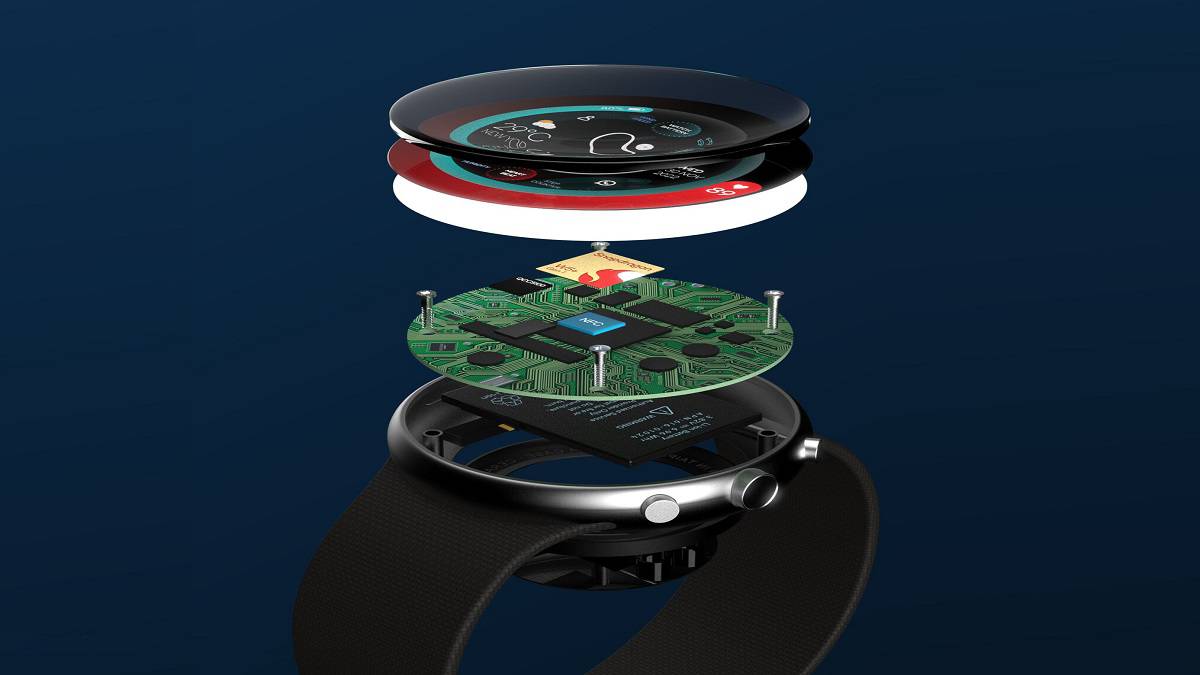Qualcomm releases the Snapdragon Wear 5 Plus to increase the performance of Wear OS 3 watches

The great majority of existing Wear OS watches are powered by Qualcomm’s Snapdragon Wear chips, yet the platform has never really delivered. The current generation of Wear OS watches has been sorely lacking due in large part to Snapdragon Wear chips, which are repurposed mobile CPU designs based on old technology. But Qualcomm is introducing the Snapdragon W5 Plus and W5, an updated wearables platform, today. And it appears that Qualcomm meant business this time.
The business is first getting rid of the Snapdragon Wear logo. Although it can appear unimportant, this is more of a symbolic new beginning. The new W5 Plus and W5 chips will instead be incorporated into the main Snapdragon family. The W5 Plus is designed for high-end smartwatches, whilst the W5 is intended for less complex gadgets like fitness trackers, children’s smartwatches, and business devices. Additionally, these processors were created expressly for wearable technology, according to Pankaj Kedia, global head of smart wearables at Qualcomm. They aren’t smartphone chips, in other words.
The platform maintains the hybrid architecture found in the Snapdragon Wear 3100 and 4100 CPUs in terms of specifications. In addition to an always-on coprocessor to help with battery conservation, there is a primary processor for interactive tasks. Qualcomm is significantly shrinking the coprocessor from 28nm to 22nm and the main chip from 12nm to 4nm for the W5 Plus. For context, the Galaxy Watch 4’s Exynos W920 from Samsung uses 5nm process technology. The Apple Watch Series 7’s S7 chip is manufactured using a 7nm technology. This is not to suggest that the W5 Plus is necessarily better because it is on 4nm; rather, it is to highlight that Qualcomm is now adopting modern process technology, much like its competitors.
Features that were previously handled by the primary SoC are now powered by the always-on coprocessor with the W5 Plus platform. They provide audio, alerts through low-power Bluetooth 5.3, and keyword detection for digital assistants. The coprocessor also manages health tracking functions including tracking heart rate and sleep. Kedia claims that the coprocessor can support embedded machine learning, but it will be interesting to see whether and how businesses employ it.
In essence, the main processor is primarily used for interactive features like GPS navigation, 3D watchfaces, and calling. According to Qualcomm’s press statement, this leads to a 50% increase in battery life, a doubling of performance, and a 30% reduction in size over the 4100 platform. A Wear OS watch has yet to attain the multi-day battery life that Kedia claims the W5 Plus platform will be able to give in some circumstances. Kedia stated in a conference that Bluetooth watches with an always-on display and a 300mAh battery will get an extra 15 hours of battery life. These figures are based on Qualcomm’s own internal research, thus it is currently hard to predict how they would apply, for example, to a real Fossil smartwatch.
The lower chip size and improved power efficiency, according to Kedia, will allow watchmakers to produce more compact, svelte watches. If accurate, this is excellent news for those with tiny wrists. Companies often increase battery size to make up for increased power consumption when they incorporate more sophisticated features. Indeed, the size of smartwatches has grown gradually but consistently over time. One such example is the almost-certain existence of a bigger Samsung Galaxy Watch 5 Pro.
The fact that there won’t be much of a wait before the first watches powered by the Snapdragon W5 is likely the biggest shift. With the Oppo Watch 3, Oppo claims to be the first to introduce a watch on the W5 platform. Mobvoi claims that the W5 Plus chip will be used in the launch of its new TicWatch this fall.
A significant change from the past, that. The Snapdragon Wear 3100 platform, for instance, wasn’t widely adopted by wearable device manufacturers until the fall of 2019. When using the Snapdragon Wear 4100 platform, the wait was significantly worse. That was announced in the summer of 2020, but a year after launch, just two smartwatches have it. There are now just a small number of smartwatches with 4100 batteries available.
Wear OS 3 hasn’t had the best launch, and we’re still unsure of how it will function on a smartwatch made by a manufacturer other than Samsung. (At this time, the Samsung Galaxy Watch 4 series is the only Wear OS 3 smartwatch that is generally accessible.) The excessively costly Montblanc Summit 3 just launched and is powered by a last-generation 4100 chip. It is the first smartwatch other than a Samsung model to run Wear OS 3. Meanwhile, speculation is that an outdated Samsung CPU will power the next Google Pixel Watch. Therefore, until Mobvoi’s W5 Plus-powered TicWatch is out this autumn, we won’t really know how a Wear OS 3 watch powered by a modern Qualcomm chip can function.
It was inevitable that the switch to Wear OS 3 would be difficult, but it also seems as though things are finally coming together. By developing an integrated software platform last year, Samsung and Google started addressing the software component of the problem. Qualcomm now appears to be releasing next-generation hardware. However, Qualcomm has a history of disappointing customers. However, with the significant advancement in process technology, the rebrand, and the shortened time to launch, perhaps Qualcomm will succeed this time around.


